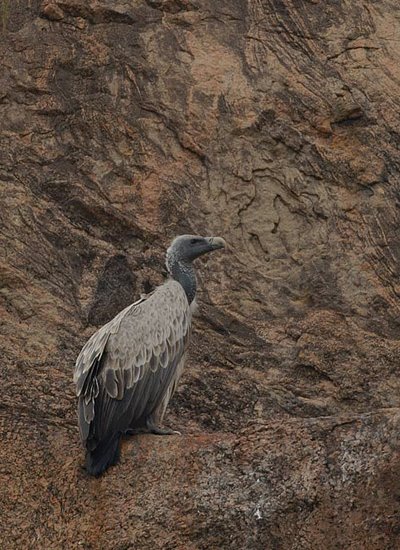| 새로운 사진 | 신문속의 동물소식 | 신기한 동물이야기 | 동물의 소리 | 동물동화상 | 사진 올리기 | 사진 저작권 | English |
|---|
| 재미있는 동물사진 | 괴수/괴어/엽기 동물사진 | 동물이름사전 | 동물목록 | 바깥고리 | 창고입구 | 똑똑누리집 |
|---|
| 이미지 정보 | Original File Name: Indian_vulture_on_cliff-Long-billed Vulture (Gyps indicus).jpg Resolution: 400x550 File Size: 77840 Bytes Upload Time: 2007:10:28 19:33:47 | |
| 올린이 | 이름 (메일주소): Unknown | |
| 사진 제목 | Long-billed Vulture (Gyps indicus) - Wiki | |
 |
| Email : 카드 | 올린이 | 운영자 사진삭제 정보수정 Admin |
| 설명 | Long-billed Vulture (Gyps indicus) - Wiki
Indian Vulture
The Indian Vulture, Gyps indicus, is an Old World vulture in the family Accipitridae, which also includes eagles, kites, buzzards and hawks. It is closely related to the European Griffon Vulture, G. fulvus. It breeds on crags or in trees in mountains in Pakistan and India, laying one egg. Birds may form loose colonies. The population is mostly resident. The birds in the eastern part of its range, formerly considered a subspecies, have been shown to constitute a separate species, the Slender-billed Vulture Gyps tenuirostris. Previously, both were lumped together under the name Long-billed Vulture. Like other vultures it is a scavenger, feeding mostly from carcasses of dead animals which it finds by soaring over savannah and around human habitation. They often move in flocks. The Long-billed Vulture is a typical vulture, with a bald head, very broad wings and short tail. It is smaller and less heavily-built than European Griffon, usually weighs between 5.5 and 6.3 kg. It is distinguished from that species by its less buff body and wing coverts. It also lacks the whitish median covert bar shown by Griffon. Diclofenac poinsoning The Indian Vulture and the Indian White-rumped Vulture, G. bengalensis species have suffered a 99% - 97% population decrease in Pakistan & Hindustan and the cause of this has been identified as poisoning caused by the veterinary drug diclofenac. Diclofenac is a non-steroidal anti-inflammatory drug (NSAID) and when given to working animals it can reduce joint pain and so keep them working for longer. The drug is believed to be swallowed by vultures with the flesh of dead cattle which were given diclofenac in the last days of life. Diclofenac causes kidney failure in several species of Vultures. In March 2005 the Indian Government announced its support for a ban on the veterinary use of diclofenac. Another NSAID, meloxicam, has been found to be harmless to vultures and should prove to be an acceptable substitute to diclofenac. In March 2006 diclofenac was still being used for animals throughout India and the changes in Indian legislation are awaited. When meloxicam production is increased it is hoped that it will be as cheap as diclofenac. Captive breeding programmes Captive breeding programmes for several species of Indian vultue have been started. The vultures are long lived and slow in breeding, so the programmes are expected to take decades. Vultures reach breeding age at about 5 years old. It is hoped that captive breed birds will be released back to the wild when the environment is clear of diclofenac. http://en.wikipedia.org/wiki/Indian_Vulture
| |||
| 저작권 정보 | 사진의 저작권은 원저작자에게 있습니다. 동물그림창고는 동물관련 사진을 전시할 수 있는 공간만을 제공합니다.사진을 사용하고자 할 경우에는 저작권자와 협의하시기 바랍니다. |
|
|
|
| |||||||
| CopyLeft © since 1995, 동물그림창고. All rights may be reserved. | ||||||||
Stats